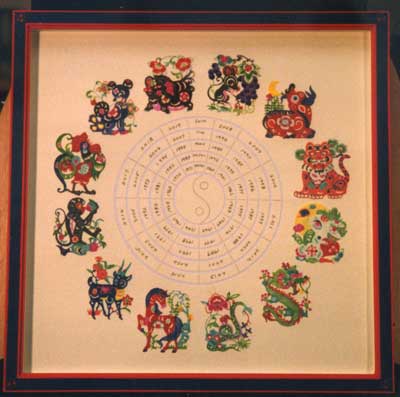Mats on paper art are a relatively new innovation in the care and display of art. Paintings and tapestries predate paper for wall display by centuries. 14th century broadsides are some of the earliest European examples of art for the pleasure of a wide audience via the use of wood blocks to make multiple and inexpensive copies of an image.
By the 1600s the use of copper engraving was employed to illustrate books, particularly for renderings of scientific aspects of plants – formally known as botanicals.

During the 18th and 19th centuries as drawings and other works on paper became more common for decorative display the need for framing paper became increasingly important. A wood frame, with or without gold leaf embellishment, was pretty straightforward as a less weighty version of the frames long used on heavy oil paintings. Eventually the use of glass to protect the delicate surface of paper showed the effects of glass against paper – moisture damage builds up quickly when it can not evaporate.
The need for some space between the paper and the glass was filled by paper board with a hole or “window” in the center to allow viewing of the work while maintaining space between the surfaces of the paper and the glass.
Items framed against glass are extremely susceptible to moisture related problems such as mold and mildew growth. Pigment from the art can also transfer to the glass. Photographic emulsion can actually stick to the glass over time and come completely separated from the paper it was developed on. This generally happens in stages, first causing severe cracking then lifting of the photograph’s surface in pieces.
There are only two good solution once this occurs – costly restoration of the original or more economical digital repair with new prints.

The physical presence of a mat provides circulation of air but the physical make up of the material used for your mat is just as important. The term “acid free” is freely used in advertising as a panacea for all things which will damage each gem of imagery—photography, watercolor, drawing—that you own. This is not precisely untrue, rather unclear.
Material next to paper should ideally be acid free as a ph too high in either acid or alkali will go through chemical changes which will damage paper. Some of the results are the brownish discoloration referred to as “acid burn”.
Mats referred to as acid free are usually a derivative of wood pulp based cellulose which has been treated to neutralize the the natural wood acid. The further chemical changes which occur over time will have their own effect on paper art sealed into a frame with a layer of this material. To be archival 100% cotton “rag” mat board should be used for any direct contact with framed art.
Works on paper properly matted with 100% cotton mat board used for the top mat and the support backing, then set into a frame and closed with a dust cover sealing the back will last decades. Many of the archival printing media used today are expected to last 100 or more years without fading when framed with conservation or museum glass.
See some of our original mat designs on our Decorative Mat Page.
For more information on any of our services please see our Contact Us Page.

